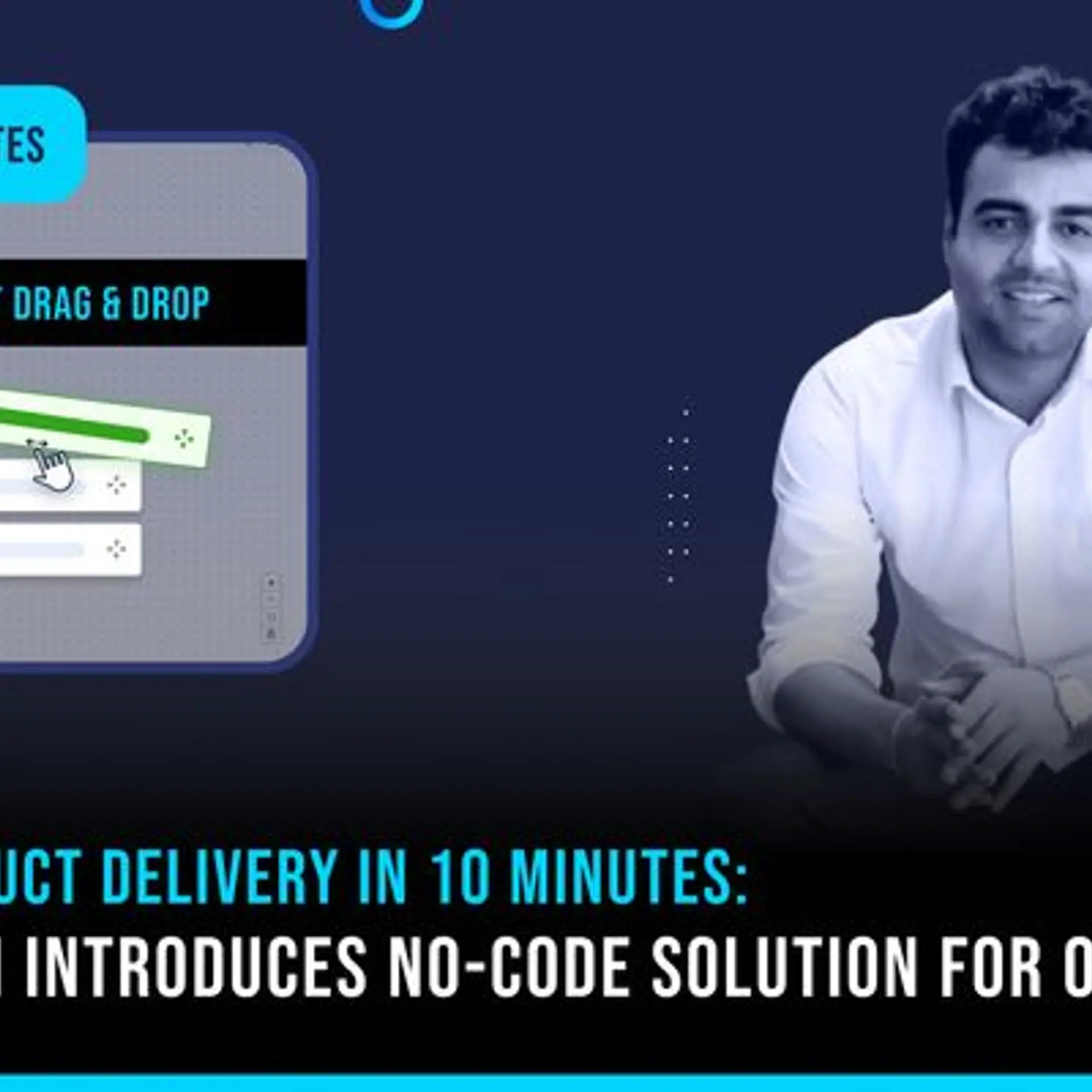The untold story of Flipkart, the big billion ecommerce startup
The founders of Flipkart were an ideal team. While Sachin Bansal took bold decisions, Binny Bansal was more thoughtful about how to implement them. Along with their outstanding team, they seemed unstoppable. But what’s the real story of Flipkart?
On May 9, 2018, Flipkart and Walmart announced their long-awaited deal. Walmart would pay $16 billion for a 77 percent stake in Flipkart, valuing India’s largest ecommerce firm at $21 billion. The Press statement by the companies was accompanied by a picture of Binny Bansal, Co-founder and then Group Chief Executive Officer, Flipkart, shaking hands with his Walmart counterpart Doug McMillon.
But it was one of the photographs released the next day that was far more striking.
On May 10, Flipkart published an ostensibly warm blog post by Binny in which he bid farewell to Sachin Bansal, Co-founder, Flipkart. Though it was well known that Sachin had resigned from his post as Flipkart’s Executive Chairman, details of his exit or even any mention of his name had been completely missing from the deal announcement. It was as if Sachin had never been associated with Flipkart.

The cover of the book, 'Big Billion Startup, The Untold Flipkart Story'.
At the end of the post was a picture of the two Bansals along with Kalyan Krishnamurthy, the former Tiger Global representative, who had become Flipkart CEO in January 2017. The three men were standing close together.
But it was the position of the three that caught the eye, revelatory, like a Freudian slip. Sachin was on the left, Kalyan in the middle, and Binny to his right with an arm around him. The photograph had actually been taken many months ago – it was inconceivable that Sachin would agree to such a photo after recent events – but it was an apt representation of how things had turned out between the Flipkart founders.
Sachin and Binny had started Flipkart together from a house in Koramangala in Bengaluru in 2007 with Rs 4,00,000 of their own money. More than a decade later – after building a company that generated $7.6 billion in revenues, after making entrepreneurship cool, after becoming billionaires – they could no longer stand each other.
How did it all go so wrong between them? Why wasn’t the momentous $16 billion sale to Walmart an unqualified success?
Flipkart’s sale was in fact the culmination of a tumultuous three-year period for the company, during which it had narrowly escaped disaster. In this time, Flipkart squandered its preponderant position in the ecommerce market and allowed Amazon, its prototype-turned-arch-rival, to come frighteningly close to toppling it.
Though Flipkart recovered towards the end of 2016, the Bansals were made to pay for their mistakes by ceding the management of their firm to Kalyan, who was installed as Flipkart CEO by the company’s investors.
But before Flipkart faltered in 2015-2016, its rise seemed like a fairy tale.
When the Bansals launched Flipkart in 2007, despite many years of liberalisation, business in India was still dominated by opaque companies whose success had as much to do with their ability to keep regulators happy as it did with the founders’ business acumen. Companies such as Infosys and Airtel were the exceptions, and in the arena of high-technology, Indian companies were especially wanting. This wasn’t surprising.

(From left) Binny Bansal, Kalyan Krishnamurthy, and Sachin Bansal.
In that period, internet entrepreneurship was considered a feeble initiative, doomed to fail. Many venture capital firms in India, despite being in the business of funding startups, didn’t believe in the possibility of large indigenous internet firms.
The Bansals were among the few dissenters. Sachin and Binny were an unlikely duo. Considered unexceptional by their friends and acquaintances, they weren’t even particularly close to begin with. Though they had both grown up in Chandigarh and studied computer science at IIT Delhi, they got to know each other only in Bengaluru. They lived in the same apartment complex and worked at Amazon, which was operating a technology development centre in the southern city since 2004.
In September 2007, the Bansals quit the American retail giant to launch an Amazon-like ecommerce firm of their own.
For a long time, it seemed like they wouldn’t make it. Flipkart’s early period was marked by a series of setbacks, travails, and near-blunders. The Bansals failed to convince any of their friends to join them. Investors told them they were wasting their time. Their first two employees were a packaging worker who had lost his job, and a chain-smoking hippie slacker who was hired primarily because he happened to own a functioning laptop.
Finally, in the summer of 2009, after being turned down by every venture capitalist in the country, the Bansals wore down the resistance of a small investment firm, aided by one of its associates who had spotted them and become a true believer.
It had taken them more than 18 months to attract a majestic sum of $1 million. A few months later, Flipkart received unsolicited interest from Lee Fixel, a little-known fund manager at Tiger Global, a hedge fund in New York. Within weeks, an investment of $10 million was finalised.
What followed was a singular journey of entrepreneurship in India.
Over the next five years, the Bansals would come a long way towards validating their founding idea – that two Indians could build a world-class internet firm in India. Flipkart wowed customers with its magnificent service, continually added new product categories, constantly cut prices and expanded its delivery reach.
Business doubled every three to six months, and investors kept pumping hundreds of millions of dollars so Flipkart could grow even faster.
Sachin, the co-founder with the big vision, transformed into a daring businessman, relishing the high-risk game that was internet entrepreneurship.
In many ways, Flipkart’s internal environment was a reflection of his personality – volatile, chaotic, excited, constantly churning in the rush to grow by leaps and bounds. He was obsessed with the term ‘billion’ – an expression of Flipkart’s mission to take ecommerce to the masses, and also, perhaps, an expression of Sachin’s own desire to become a visionary billionaire entrepreneur.
In Binny, Sachin had the ideal foil. While Sachin took the bold decisions, Binny was more thoughtful about how to implement them. Along with their outstanding team, they seemed unstoppable.
As Flipkart rose irrepressibly, the company uplifted the entire startup ecosystem. The belief – held by other entrepreneurs, investors, startup employees, as well as those who had chosen to stay out – that India could sustain a thriving startup scene grew stronger.
In July 2014, when Flipkart raised a mammoth $1 billion, Sachin declared,
“We believe India can produce a $100 billion company in the next five years, and we want to be that.”
In that year particularly, Flipkart embodied the anxieties of the Indian economy’s place in the world, its keen awareness of its inferiority vis-á-vis both China and the West, and, of course, its vast promise. It seemed that Flipkart would lead India into the age of the internet, as the country’s answer to Amazon and Alibaba.
But in its ultra-consumerist vision, its belief that it would take its rightful place alongside the American and Chinese internet giants, as well as in its subsequent stumbles and its extraordinary but narrow wealth creation, Flipkart is a parable of the post-liberalisation era that has delivered substantial gains, but eventually fallen far short of its promise.
This is the story of how the Bansals built Flipkart into a multi-billion-dollar powerhouse, succeeded where dozens had failed, made entrepreneurship into a desirable occupation, over-reached, lost control of their creation, and were forced to sell out to a retailer whose dominance they had once dreamt of emulating.
(Edited by Megha Reddy)
(Disclaimer: The views and opinions expressed in this article are those of the author and do not necessarily reflect the views of YourStory.)



![[YS Exclusive] Straight talk with Flipkart’s Kalyan Krishnamurthy, the Indian CEO the world is ...](https://images.yourstory.com/cs/wordpress/2018/12/Kalyan-Krishnamurthy_1.jpg?fm=png&auto=format&h=100&w=100&crop=entropy&fit=crop)





